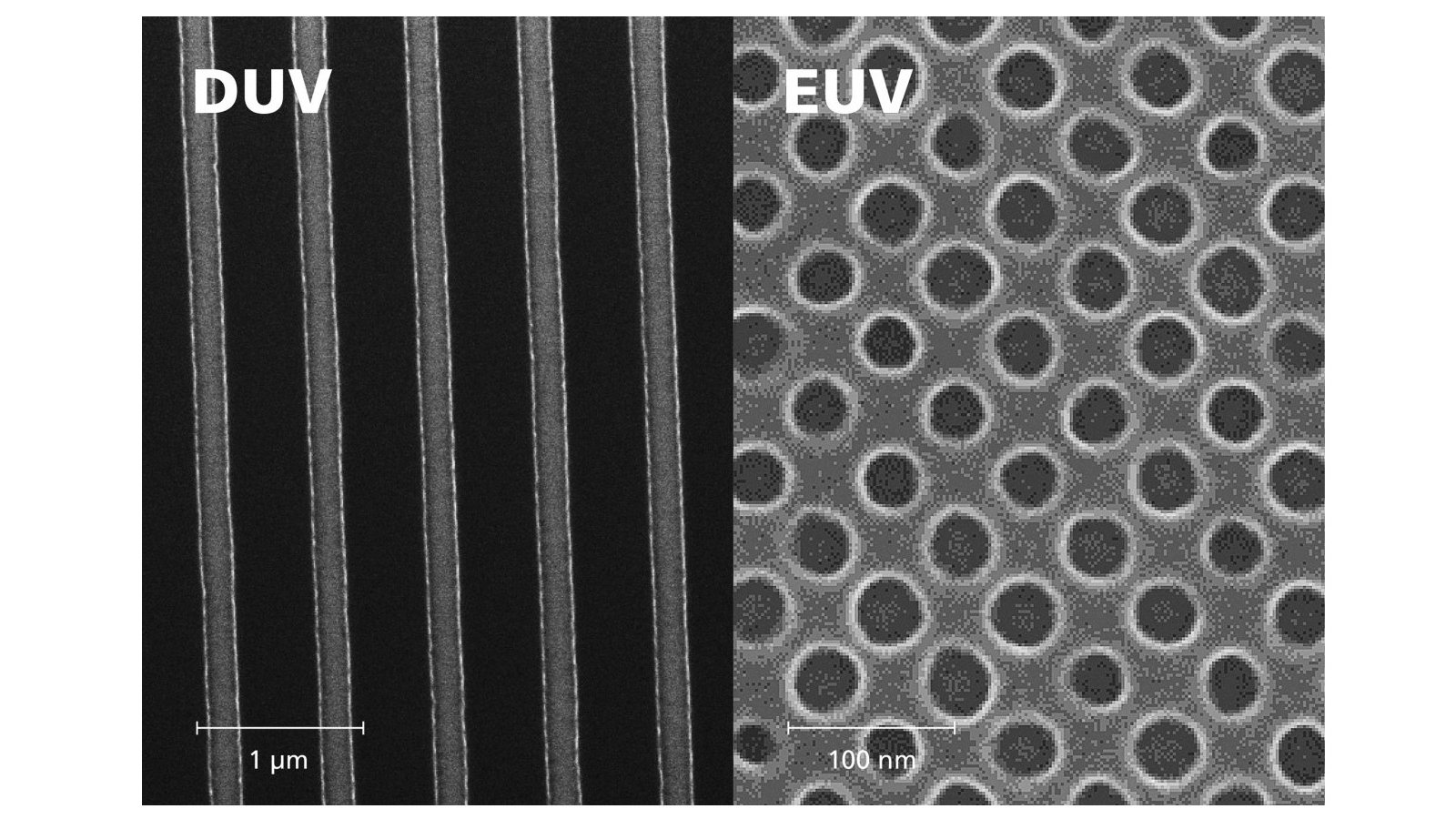How can structures smaller than one micrometer be created? And how can even smaller structures of less than 100 nanometers be produced without great effort? Scientists at the Fraunhofer Institute for Laser Technology ILT have developed several technologies to answer such questions. They can use them to simulate, produce and measure periodic microstructures. They use phase-shifting transmission masks that can efficiently generate nanostructures down to 28 nanometers.
The basic idea is to generate periodic structures via interference effects of coherent radiation, such as the achromatic Talbot effect. This creates an intensity distribution in the near field, i.e. less than 500 µm behind a mask, with which structures can be generated microlithographically.
With a KrF excimer laser at a wavelength of 248 nm, structures with a period of several hundred nanometers can be produced. The principle also works with wavelengths in the extreme ultraviolet (EUV). The Aachen-based company has developed its own beam source for this purpose, the "FS5440". Based on a gas discharge, the necessary radiation is generated at 13.5 nm. It is considerably more compact than the laser-based EUV source used in large industrial plants. Nevertheless, its performance is more than sufficient for many applications in the production or measurement of nanostructures.
The aim of the experts at Fraunhofer ILT is to develop sustainable technology and to be able to offer the entire process chain. Start-ups or interested SMEs will thus be given access to this cutting-edge technology at reasonable investment costs.


